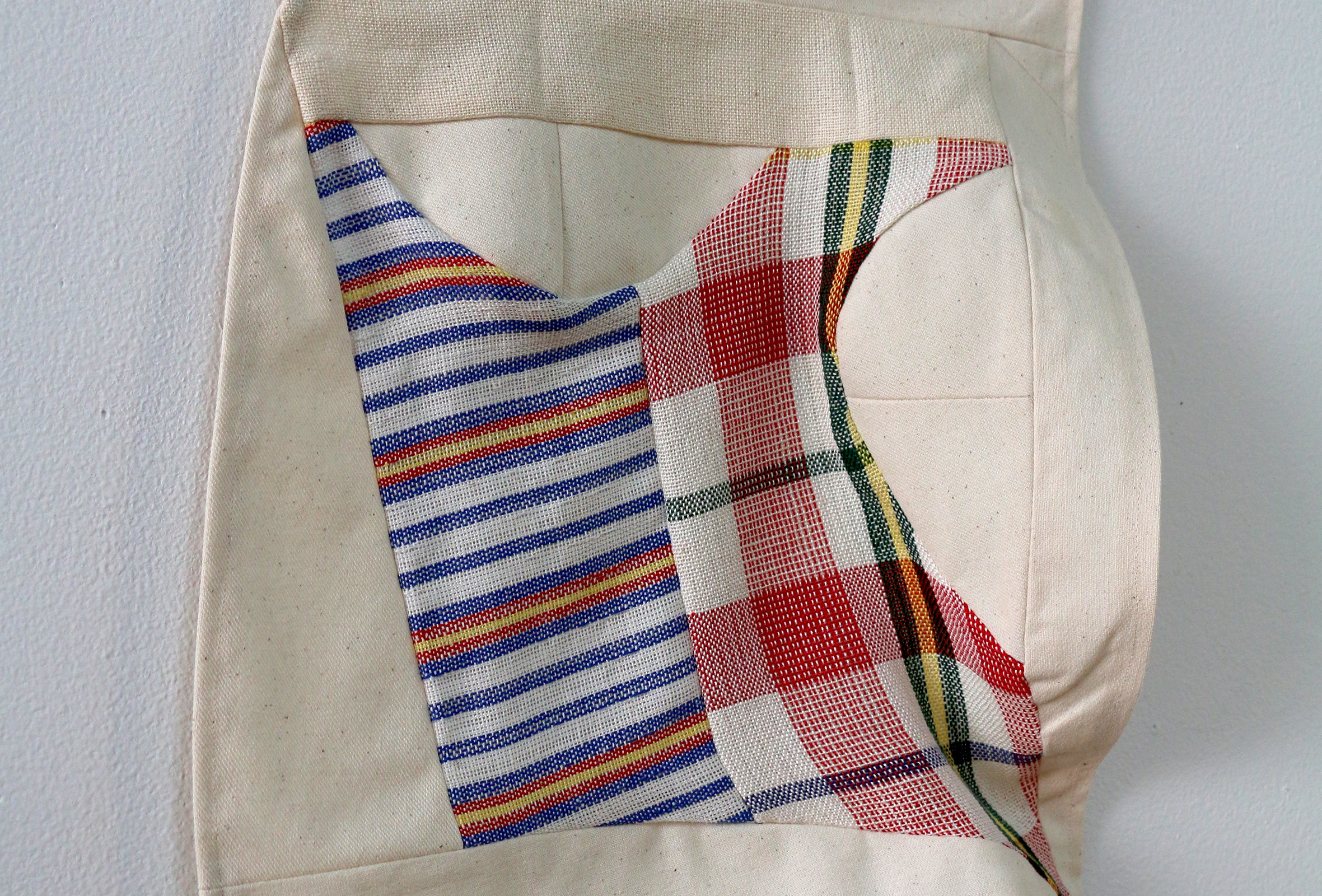

“This is Not Pretty” by Margaret Leininger
September 3, 2018 @ 8:00 am - October 19, 2018 @ 5:00 pm
Artist Statement:
Cloth and its and complex history inspires my work. Using this common everyday utilitarian material that provides shelter and comfort, I explore cloth’s social and cultural impact on society. Fascinated by cloth’s associations with industrialization, colonialism, globalization, appropriation, cultural displacement, labor, and gender, I am particularly interested in my personal intersection of this material as a producer and consumer of cloth. I am also intrigued by the connection between architectural spaces of industrial production and the social constructs that evolve around these industrial centers, especially in the wake of the deterioration of these industrialized centers.
My current body of work draws from the personal history of growing up in a textile mill town in SC where many people were employed by textile mills in the area. I witnessed first hand the impact of the industrial production of textiles and the industry’s demise as many of the mills left the country for cheaper labor. The intimate experience of living within a community whose lives revolved around such a blue-collar identity impacted me greatly. As I revisit former mills whose tall clock towers once dominated the landscape, I collect scattered bricks that litter the landscape picking and choosing those that provide a hint of peeling paint or embossed stamps identifying the brickyard from which they came. I am fascinated by the connection of the production of both the bricks and the cloth. Both are such common objects, used and then discarded in our disposable economy. Both have become invisible and under appreciated, not dissimilar to the laborers who produce such objects. Exploring this interconnection between architectural structures, cloth, and laborers, I am creating work that examines the connection between the making of such common, often discarded, objects and their cultural value.
Exhibition Statement
This Is Not Pretty comes from handwritten note on a 1943 pattern draft of the Churchill Weaver’s collection. Fascinated by the identity of the anonymous maker, gendered roles and sociological constructs of craft production, this exhibition explores traditional quilt patterns and replicated woven patterns from a 1771 book from Manchester England intended to be used for clothing artisans, sailors, and slaves.
Image: Labor Cloth (detail), Handwoven and industrially woven fabric, 2018, 8″ x 12″
